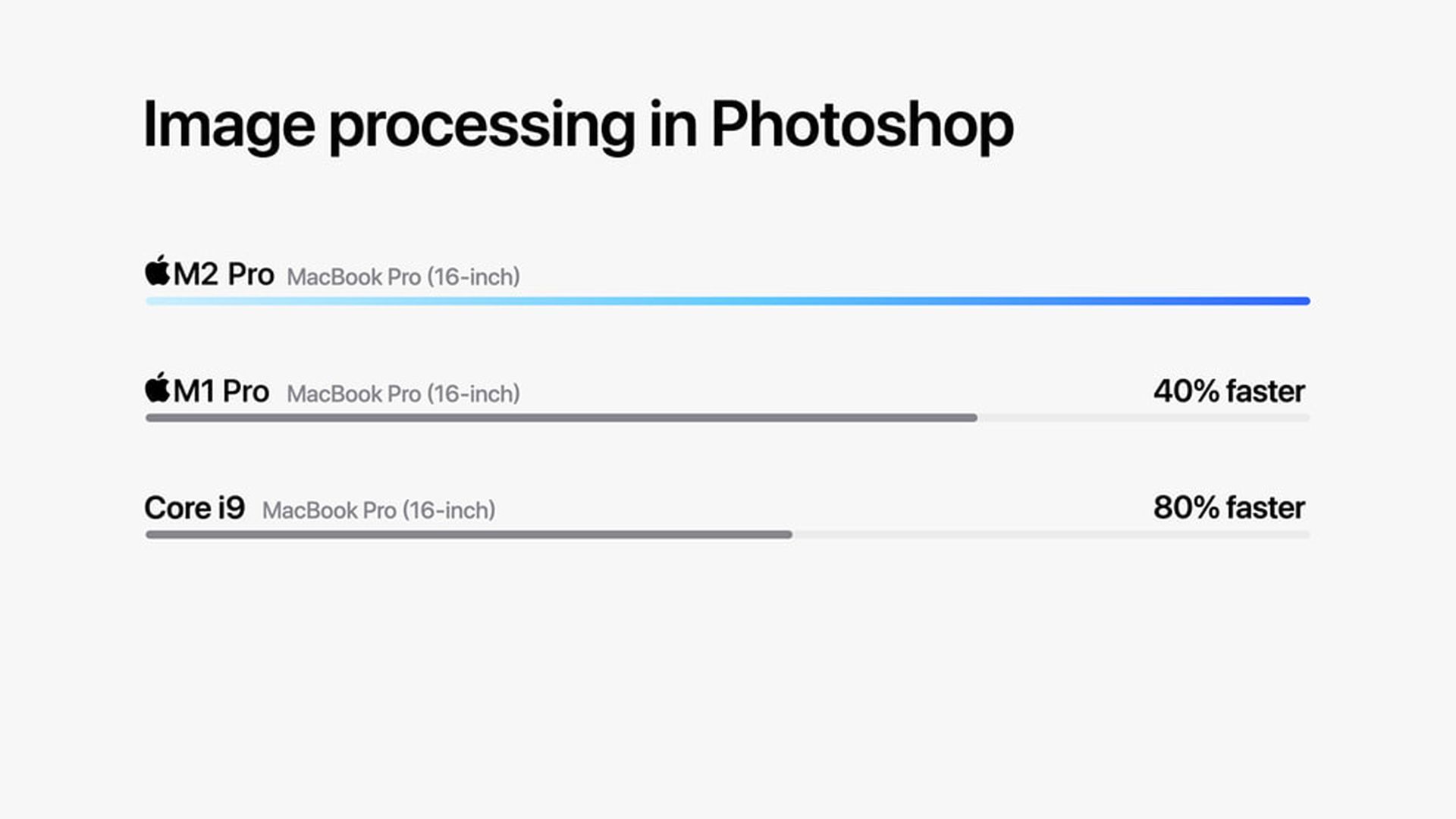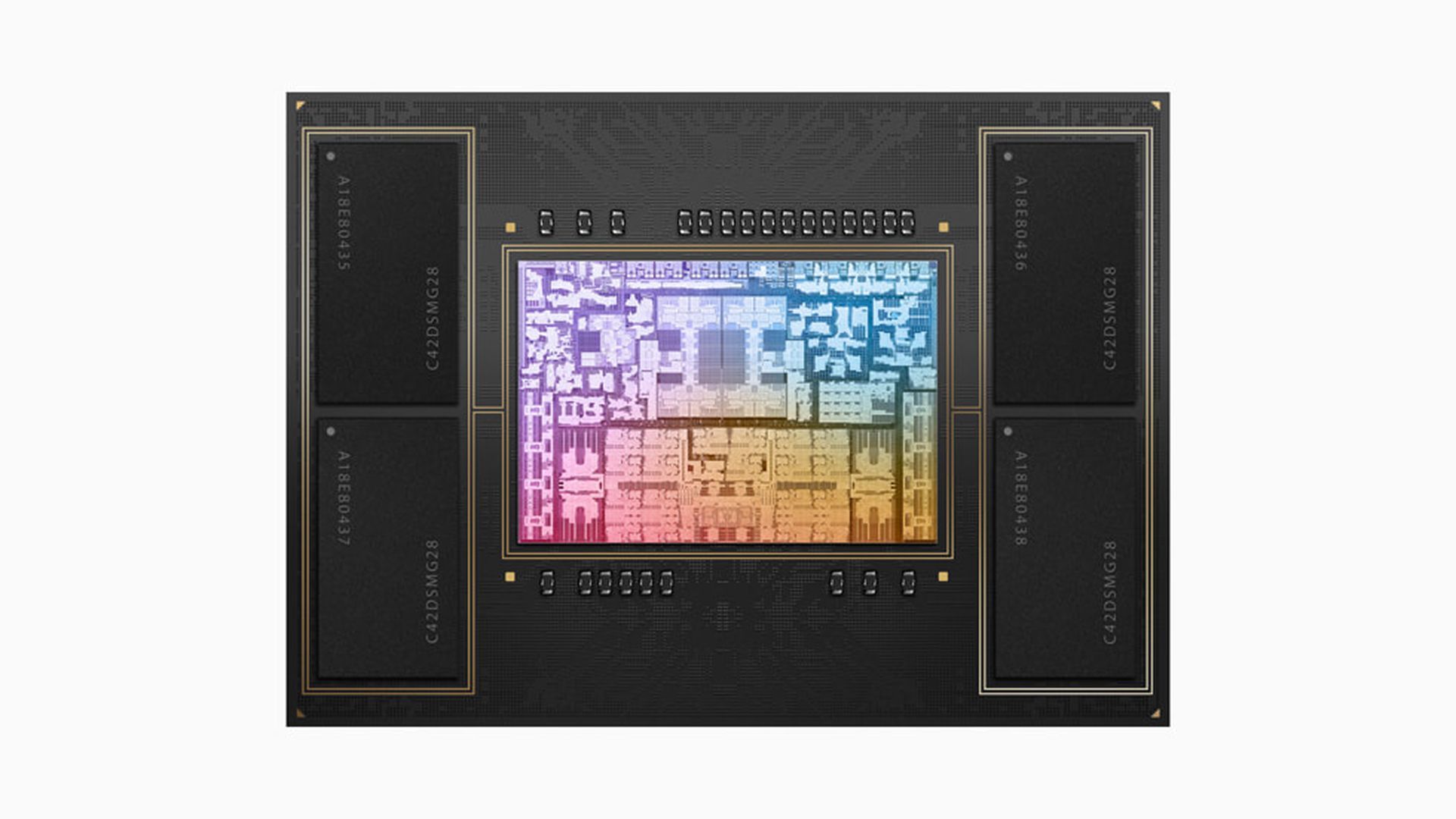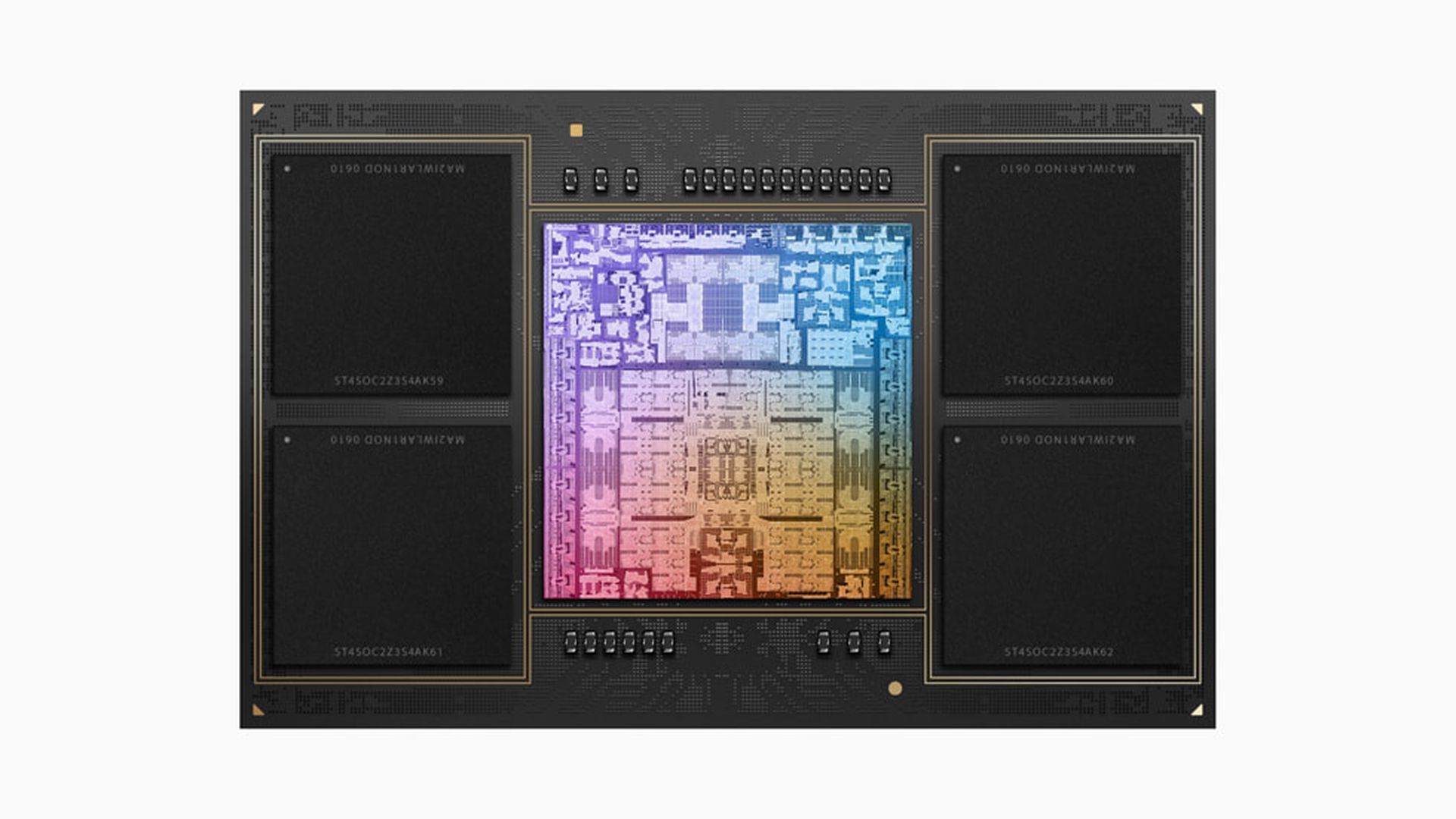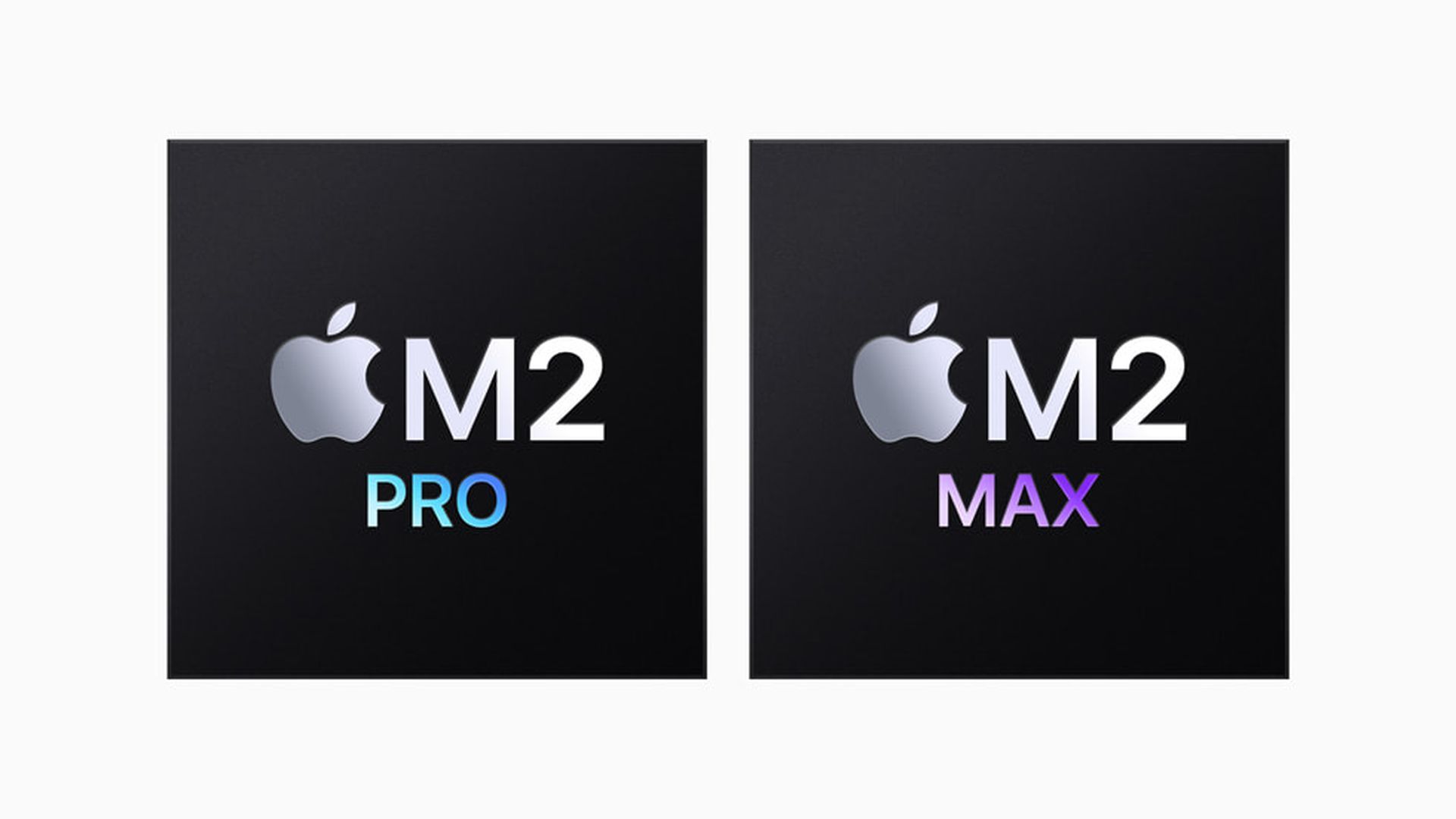Today’s Apple announcement revealed the newest silicon for professional users, the M2 Pro and M2 Max, and the company is promising significant enhancements in performance with this second-generation.
Apple announcement today: M2 Pro and M2 Max specs explained
M2 Pro and M2 Max are unveiled advanced SoCs at today’s Apple announcement that elevate the energy-efficient performance of Apple silicon. The M2 Pro features a 12-core CPU and 19-core GPU, along with 32GB of unified memory. M2 Max goes further, with a 38-core GPU, double the memory bandwidth, and up to 96GB of unified memory, making it the most powerful and energy-efficient chip for professional laptops. Both chips have advanced custom technologies such as a faster 16-core Neural Engine and Apple’s media engine. M2 Pro brings professional performance to the Mac mini and improves the performance and capabilities of the 14-inch and 16-inch MacBook Pro.
“Only Apple is building SoCs like M2 Pro and M2 Max. They deliver incredible pro performance along with industry-leading power efficiency. With an even more powerful CPU and GPU, support for a larger unified memory system, and an advanced media engine, M2 Pro and M2 Max represent astonishing advancements in Apple silicon,” stated Johny Srouji, Apple’s senior vice president of Hardware Technologies.
M2 Pro and M2 Max have updated custom technologies:
- Both M2 Pro and M2 Max come equipped with Apple’s next-generation, 16-core Neural Engine, which can perform 15.8 trillion operations per second and is up to 40% faster than the previous generation.
- M2 Pro has an incredibly powerful and efficient media engine, which includes hardware-accelerated H.264, HEVC, and ProRes video encoding and decoding, allowing for the playback of multiple streams of 4K and 8K ProRes video while using very little power. M2 Max has two video encoding engines and two ProRes engines, resulting in up to 2 times faster video encoding compared to M2 Pro.
- Apple’s latest image signal processor provides better noise reduction and, in combination with the Neural Engine, uses computational video to improve camera image quality.
- A next-generation Secure Enclave is a crucial aspect of Apple’s top-notch security.

Apple M2 Pro specs
Constructed with a second-generation 5-nanometer technology, M2 Pro is composed of 40 billion transistors, which is nearly 20% more than M1 Pro and double the amount in M2. It offers 200GB/s of unified memory bandwidth, which is twice that of M2, and has the capacity for up to 32GB of low-latency unified memory. The next-generation 10- or 12-core CPU is made up of up to eight high-performance cores and four high-efficiency cores, resulting in multithreaded CPU performance that is up to 20% faster than the 10-core CPU in M1 Pro. Applications such as Adobe Photoshop can handle heavy workloads faster than ever, and Xcode compiling can be done up to 2.5 times faster than on the fastest Intel-based MacBook Pro.

The GPU in M2 Pro is capable of being configured with up to 19 cores, which is three more than the GPU in M1 Pro, and it has a larger L2 cache. The graphic speed is up to 30% faster than that of M1 Pro, resulting in significant improvements in image processing performance and allowing for gaming at the level of a gaming console.
Apple M2 Max specs
M2 Max has 67 billion transistors, which is 10 billion more than M1 Max, and more than 3 times that of M2. This allows for even further performance and capabilities of Apple silicon. It has 400GB/s of unified memory bandwidth, which is twice that of M2 Pro, 4 times that of M2, and can support up to 96GB of fast unified memory. This allows for instant opening of large files and smooth and quick work across multiple professional apps.

M2 Max has the same next-generation 12-core CPU as M2 Pro. The GPU is even more powerful with up to 38 cores and a larger L2 cache. Graphics speeds are up to 30% faster than M1 Max. With 96GB of memory, the new MacBook Pro with M2 Max is able to handle graphics-intensive projects that other systems can’t run. It can handle tasks such as visual effects, training machine learning models and stitching together gigapixel images. Whether plugged in or running on battery power, MacBook Pro with M2 Max offers incredible performance. M2 Max is the most powerful and efficient chip for a professional laptop.
macOS Ventura with M2 Pro and M2 Max
macOS is designed specifically for Apple silicon and the combination of macOS Ventura and the new powerful chips provides users with unmatched performance and productivity. Mac computers with Apple silicon have access to over 15,000 native apps and plugins that take full advantage of the capabilities of the M-series chips.
macOS Ventura introduces new features like Stage Manager, and enhanced functionality with Continuity Camera and Handoff in FaceTime. Additionally, macOS Ventura has significant updates to Safari, Mail, Messages, Spotlight and more, which all perform faster and more efficiently on M2 Pro and M2 Max.

Apple’s sustainability efforts
The M2 Pro and M2 Max assist the new MacBook Pro and Mac mini in meeting Apple’s energy efficiency standards. The power-efficient performance of Apple silicon enables the new MacBook Pro to have the longest battery life ever in a Mac, reaching up to 22 hours. This leads to less need for plugging in and less energy consumption throughout its lifetime.
With a goal of having a net-zero climate effect throughout the whole company by 2030, including all product life cycles and manufacturing supply chains, Apple is currently carbon neutral for its global corporate activities. As a result, every chip produced by Apple will be completely carbon neutral throughout the whole manufacturing process.
Conclusion
Without conducting our own testing, it’s difficult to predict what to anticipate from the performance of the M2 Pro and M2 Max, but Apple has made some performance claims that we can at least test and see if they hold up when we complete our testing.
According to Apple, the M2 Pro will outperform the M1 Pro in terms of CPU performance by 20%, GPU performance by 30%, and neural engine performance by 40%.
That’s pretty much all the information Apple is giving us about these chips, and even then, it’s best to take it with a very big pinch of salt. The M2 Max should feature GPU speeds that are roughly 30% quicker than the M1 Max.
If you are wondering what to expect at the Apple’s events in 2023 check our article out!





